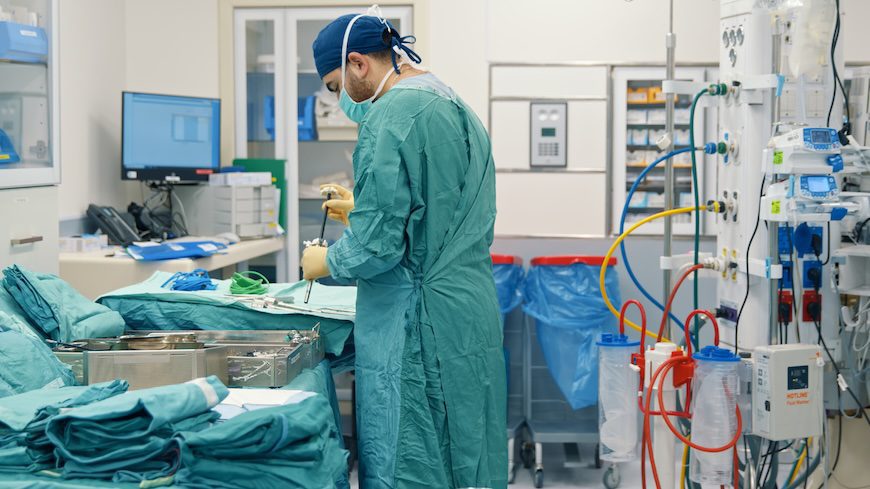A new study suggests that neurostimulation therapies targeting a specific brain circuit might work as a novel treatment for post-traumatic stress disorder (PTSD).

By analyzing veterans with traumatic brain injuries (TBI), the team at Brigham and Women’s Hospital discovered that damage to certain areas of the brain was associated with a lower likelihood of developing PTSD.
The findings, published in Nature Neuroscience, could chart a course to more accurate therapeutic PTSD treatment.
Critical PTSD Findings
The research focused on 193 veterans from the Vietnam Head Injury Study, all of whom had penetrating traumatic brain injuries. Researchers wanted to figure out whether the location of brain damage had anything to do with whether the patient would develop PTSD.
The team found that damage to amygdala brain regions— the area that processes fear — reduced the risk of PTSD. The findings suggest that certain lesions could shield against PTSD by disrupting a brain circuit involving the amygdala and the medial prefrontal cortex.
“This is a very real brain disease, and we can localize it to certain brain circuits,” Shan Siddiqi, MD, the study’s lead author and a psychiatrist at the Brigham’s Center for Brain Circuit Therapeutics, said in a press release. “PTSD is not about mental strength or weakness, but a brain condition we can target with treatments.”
Understanding Brain Circuits
The researchers worked with other teams from Northwestern, Brown, and Duke Universities to examine the brain’s wiring and find out how it influences the development of PTSD.
Earlier research had already revealed that damage to the amygdala reduces the likelihood of developing PTSD, but the Brigham team wanted to hone in and pinpoint the specific brain circuit – if it existed – caregivers could focus on during therapy.
“The amygdala is located deep within the brain, making it difficult to reach with non-surgical stimulation methods,” Siddiqi added. “We wanted to find a circuit that could be targeted with existing neurostimulation therapies.”
Earlier studies already identified brain networks involved in depression and addiction that caregivers can address with transcranial magnetic stimulation (TMS).
Michael Fox, MD, PhD, a co-author and director of the Center for Brain Circuit Therapeutics, emphasized the importance of finding a similar target for PTSD.
“One of the major challenges in developing brain stimulation treatments for PTSD has been finding the right therapeutic target,” Fox explained. “Our study turned to brain lesions to map out the circuit associated with PTSD risk.”
Mapping the Brain for a PTSD Target
Researchers worked with Vietnam War veterans who’d suffered a head injury during their service. Working with data about the precise location of the brain damage, the researchers mapped the affected brain circuits and compared their findings to a control group of 180 veterans without brain injuries.
The analysis revealed a network connected to the amygdala that seemed to safeguard against PTSD.
The research team then explored whether this brain circuit could serve as a viable treatment target. They analyzed previous TMS trials for PTSD and found that patients who showed improvement were often those whose stimulation targeted this same circuit.
“The trials that hit this circuit tended to have better outcomes,” Fox said. “We believe we’ve identified a potential therapeutic target for PTSD treatment using TMS.”
Applying it to Real Word Treatment
During the research project, one patient with severe PTSD sought TMS treatment at Acacia Mental Health in California. Clinicians asked Siddiqi to help them identify the circuit he helped identify to help with treatment. Subsequently, the patient showed notable improvement after treatment. It’s worth noting this is anecdotal evidence – one patient’s story. Nevertheless, it helps demonstrate the potential clinical relevance of the study results.
Even so, Saddiq and his team suggested that researchers should conduct further studies before widely adopting neurostimulation therapies targeting this brain circuit. Fox and Siddiqi added that researchers must conduct a randomized controlled trial if anyone wants to secure FDA approval for this novel therapeutic approach.
They also acknowledged several limitations of the study, including the fact that it involved only veterans. The researchers remain undecided about whether the same brain circuits would apply to PTSD patients who hadn’t served.
Despite these uncertainties, the study marks a significant step toward developing more effective treatments for PTSD
“There’s still much to learn,” Fox said, “but identifying a specific brain circuit as a therapeutic target is an important advance for patients who desperately need better treatment options.”



